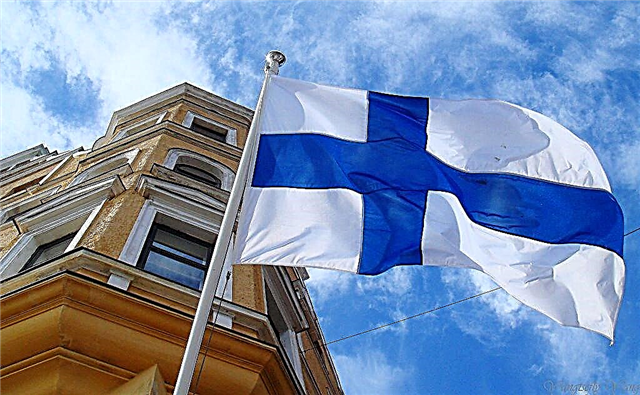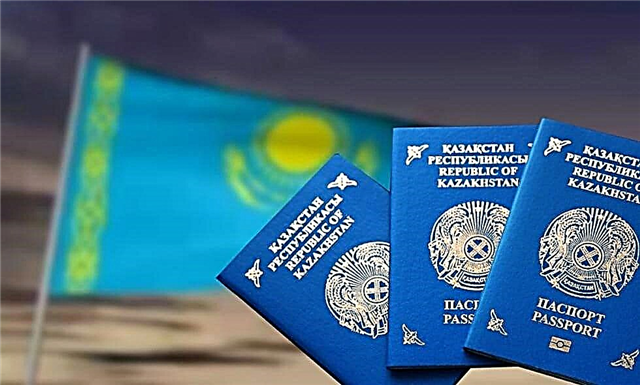The quality of higher education in Finland and the uniqueness of the Finnish approach to teaching are well known all over the world. Self-control in the process of acquiring knowledge not only excludes cheating on exams, but also the study of uninteresting disciplines, without causing disapproval of teachers. Studying in Finland for foreigners is notable for its affordable cost, interesting practice, as well as a democratic attitude towards students with any level of training.

Features of the Finnish education system
First of all, it should be noted that in Finland there is no differentiation of the education system into the state and non-state sectors. The state is making every effort to bridge the gap between the quality of education in various educational institutions, and even finances private schools, which are fully controlled by the Ministry of Education.
At the same time, there is a noticeable difference in the country between universities and institutes. This is due to the fact that the institutes do not have a basis for conducting scientific research, so they do not have the right to grant students a master's degree.
The location of educational institutions in the country is due to the density of the population living in a particular region. However, there is a relatively large university in every city with a population of more than 40 thousand people.
Education in Finland attracts foreign students with no tuition fees. However, only those who know Finnish at a sufficient level to receive education can study at the expense of the state.
At the same time, the cost of English-language programs is considered quite affordable compared to other European universities.
The specifics of preschool education
Unlike higher and secondary educational institutions, preschool institutions are paid. Kindergartens can be family, private, municipal, but the cost of education in them is the same and depends solely on the income of the family. The minimum wage is 26 euros per month - this rate is designed for low-income families. Those who live in prosperity pay for tuition at the maximum rate - 283 euros per month. The funds received are used to support the work of the kindergarten and the salaries of educators.
There are not enough places in kindergartens in large cities, so the state pays 500 additional euros to those families who agree to raise a child at home.
Kindergarten accepts babies from nine months to seven years of age. Most of the gardens are designed for a full school day - from 6.30 am to 5 pm.
According to the law, there should be no more than four babies per teacher, the same rule applies to family kindergartens. They go for a walk with the kids in any weather, accustoming them to the harsh climate of the country, while only the clothes and the purpose of the walk are different. For example, in bad weather, children can be taken to the city library, and on a sunny day, they can organize a walk in the forest.
Receiving secondary and secondary vocational education
A child's acquisition of basic general education begins at the age of seven and lasts for the next nine years. Finland has a national curriculum, which is complemented by local programs developed by each educational institution individually.
School curricula are funded from the city budget, so the communes control the child's secondary education, which in Finland is free for all citizens.
High school teachers are required to have a master's degree, elementary school teachers have a general teacher education, and secondary school teachers specialize in the disciplines they teach. More information on this topic can be found in the article "Schools in Finland".
After leaving school, graduates go to colleges or specialized vocational schools. Students must purchase textbooks and various study materials on their own, but the training is still free.
For those who do not know Finnish well enough, there are preparatory courses for admission to secondary specialized educational institutions. Such training lasts from 2 to 4 years.
Finnish university admission process
You can enter a higher educational institution after completing the first level education (college, gymnasium).
All universities in Finland are subdivided into universities and vocational schools, which are more like Russian institutions. In the first case, the emphasis is on research work, in the second, students spend more time in production, where in practice they study the features of the acquired profession.
In most cases, education is conducted in Finnish or Swedish, but universities in large cities also offer English and French language programs.

The first stage of obtaining higher education is a bachelor's degree, graduates of which can enter a master's degree, and then a graduate school, in order to subsequently receive a doctorate degree.
Only those applicants who have completed secondary education and passed the unified state exam (both in Finland and in their home country) can apply for study at universities in Finland.
Willingness to pay for tuition that is not in Finnish is also important.
Master's and postgraduate studies
Education for the purpose of obtaining a master's degree in Finland is free even for Russians, but only on the condition that it is in Finnish. There is no need to take entrance exams, since the selection of applicants is based on the submitted package of documents, including a bachelor's degree, a psychological portrait of the applicant and recommendations from the previous place of study or work.
After choosing a university, it is necessary to clarify the deadlines for submitting documents for admission, since they differ in different educational institutions, although usually documents are accepted from November to January inclusive.
If the training will take place in English, the documents must be accompanied by a TOEFL or IELTS certificate.
Postgraduate study lasts four years, during which the student goes through training courses, practical training, writes and defends a thesis.
Finnish postgraduate studies can be enrolled in the presence of a master's degree, and not necessarily in the specialty chosen for postgraduate studies.
Upon admission, it is necessary to provide a developed research plan and confirm the availability of funding sources for training (scholarships, grants, sponsors).
How much does the training cost and how long does it take?
The bachelor's program is usually designed for 3-4 years, and the duration of study depends on the type of university chosen. The university offers three-year theoretical training programs, the institute - a four-year practice of a predominantly polytechnic direction with training programs, after which the student is ready to enter the labor market.
The minimum cost of an undergraduate program in English is 4,000 euros, the average cost is 8,000 euros per year. Students who choose to teach in Finnish do not pay tuition fees.
Almost all students after completing their bachelor's degree continue their studies in the magistracy, since having a master's degree increases the chances of getting a high-paying job and fast career growth.
The duration of training in this case is 1-2 years, the average cost depends on the specialty, educational institution and ranges from 6 to 10 thousand euros.
Since the master's program provides for the improvement of knowledge gained at the bachelor's degree, admission is possible for a similar specialty or related to it. Such areas as jurisprudence, medicine, psychology, provide for the passage of professional practice.
Doctoral studies last four years, while the number of places for admission is not limited - everyone with good grades in the chosen profile is accepted.
Only in some universities there are quotas for free admission, and for those who do not pass the average mark of the diploma, they arrange an additional exam. Education is free for all categories of students, the fee is charged only for the use of teaching materials.
There is also an alternative program called “licentiate”. It only takes two years to obtain this degree. And although the prestige of a licentiate is lower than that of doctoral studies, people who work in parallel with their studies are often admitted there.
Accommodation, benefits, student benefits
Thanks to the allowance paid by the Finnish state to students, they have the opportunity to fully concentrate on their studies. There is even a special student welfare office known as Kela - all students over the age of 17 who need financial assistance can apply there.
Only full-time students whose studies last for at least two months will approve a request for benefits. Part-time students cannot expect to receive benefits.
Benefits are calculated based on personal needs and may include discounts on food, travel, accommodation, financial assistance, or a government-sponsored student loan.
If the student studied well and completed the course without extending it, then after receiving the diploma, Kela, on his own initiative, can block up to a third of the loan issued by the bank.
The allowance and reimbursement of living costs allow students to live independently, study and at the same time not waste time on part-time jobs.
If a student lives in a wealthy family, then material assistance is not issued to him until the age of 20, since the state entrusts the care of the student to his parents. In exceptional cases, you can submit a request for travel compensation if you have to travel to university by train or commuter train.
On average, the amount of the allowance is 500-600 euros, about half of this money goes to pay for living in a university hostel. If you wish, you can rent an apartment: in this case, only part of the costs is compensated, which is equal to the cost of living in a hostel.
As for part-time jobs, the state limits their duration to twenty hours per school week; for the period of holidays, these restrictions are lifted. Most often, students work in the service sector, where payment is made on an hourly basis and is approximately 10 euros per hour. It is also allowed to search for a job in a specialty and undergo industrial practice with payment at the same minimum tariff.

To complete the course, the student must have accumulated a minimum of 20 credits of practice, with one credit equal to 40 hours.
A work permit is not required for either Finnish or foreign students: in order to get a part-time job, it is enough to present a student visa and a certificate from the university.
Holidays in Finland have a flexible schedule, so students have an average of two and a half months of rest in the summer and one week in the fall, during the New Year and Easter. During the holidays, the student can go home or look for work in Finland.
If a Finnish company is ready to invite a foreign student to work after receiving a diploma, the Ministry for Foreigners will support him and help resolve all visa issues related to employment.
How to choose a Finnish university
When choosing an educational institution for higher education, one should focus not only on the specialty, but also on such factors as:
- low cost of training in English;
- quite a high amount of the scholarship;
- availability of distance learning;
- no need to present test results for TOEFL or IELTS;
- the possibility of passing entrance exams in the country of residence.
This greatly simplifies the admission process, and with an equal value of diplomas from Finnish educational institutions, it increases the chances of obtaining a prestigious higher education.
At the same time, you can apply to no more than six universities - universities will consider documents in order of priority established by the student himself.
The most popular among Russian-speaking applicants are universities in cities such as Helsinki, Turku, Oulu, Vaasa, South-Eastern University of Applied Sciences, ABO Academy, JAMK University of Applied Sciences. The list of popular higher education institutions also includes the Savonia and Kajaani universities, the Henley business school.
Finally
A higher education diploma obtained in Finland is highly regarded in the world and opens up prospects for its owner to find a prestigious job, career growth and high salaries. The availability of grants, material assistance and scholarships makes studying in Finland affordable for gifted students who are of value to the Finnish state. Those of them who know the Finnish language can study for free, and the payment for English-language programs is largely compensated by social benefits, so everyone is encouraged to apply for admission to the university.











